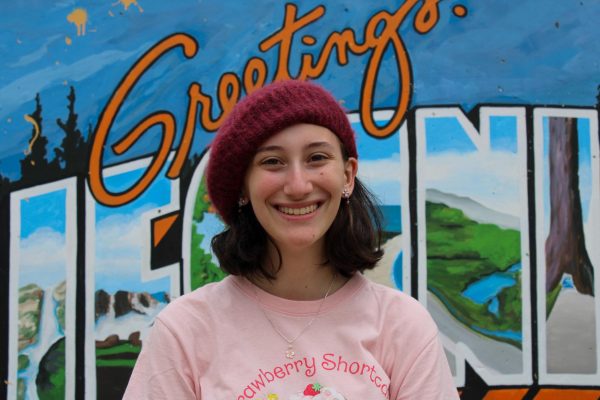In today’s new digital age, social media has become an essential part of the lives of the current and older generations.
With its ability to connect people from all corners of the world, social media platforms such as Instagram, TikTok, X (previously known as Twitter) and many more have revolutionized the way people communicate, share information and express themselves on an everyday basis.
COMMUNICATION
Social media has had both positive and negative effects on communication.
At Cal High, the majority of the students have social media. A Californian survey emailed to students about the effects of social media, reveals that 89.1 percent, or 115 out of 129 students, are on at least one social media platform.
The average time most students indicated they spent on social media per school day is one to two hours, according to the survey.
On the positive side, platforms such as Instagram, Snapchat and X have allowed many people to stay in touch with friends and family by sending photos and sharing updates about their lives, no matter how far they are from each other.
“I felt like social media helped me connect with my friends and stay in contact with my family, especially during the pandemic since we couldn’t go out,” sophomore Brayde Kuykendall said. “It really allowed me to talk to them more, become closer and even make new friends.”
Social media has also played a significant role in spreading awareness about events that are happening in the world, as well as addressing important issues such as climate change, human rights and social justice.
“During the beginning of the Palestine-Israel conflict, I didn’t know what was happening and was kind of clueless,” sophomore Zuhayr Khan said. “I used social media to really see what was happening and to know the conflict, and I’m now aware of it.”
Despite the benefits, communication through social media also has led to a lot of issues. The easy access to communication has led to many concerns with the rise of cyberbullying and online harassment.
“I think the main reason people cyberbully, or try to be mean on social media, is because they can’t get caught as easily like they would at school or a public place,” junior Krishiv Bannerjee said. “They can make an alternate account or something and say some mean stuff but would never get caught.”
This is prevalent with apps such as Snapchat because of its feature that deletes messages after closing out of a chat after 24 hours. People have the freedom to post what they want because all chat history disappears.
EDUCATION
The impact of social media on students’ academic performance overall cannot be overlooked. While social media can provide access to educational resources and many ways to learn, it can also be a source of distraction.
English teacher Ashley Tran said students in her class are addicted to their phones and social media.
“I feel like kids are so glued to their phone, it’s really hard to get them off it,” Tran said. “It feels like an addiction or a dependency on their phones.”
But some students feel like social media can have a positive impact on their education.
“I feel like social media helps my school/education,” sophomore Logan Ramey said. “Say that I need help on my homework or need to study more for something I don’t understand, I can hit someone up through social media and get the help I need.”
Because of social media apps such as YouTube and TikTok, there are many ways students can learn online, or even try to teach themselves how to understand certain concepts and subjects better.
“I used to procrastinate and not use my time wisely a lot, but because of social media like TikTok, and YouTube I have found ways to use my time wisely and found better ways to study,” freshman Veer Vish said. “If I don’t understand something I search it up on YouTube and find a video that can teach me things I don’t understand.”
But not all students share this sentiment.
Nearly 25 percent, or 32 of 129 students surveyed by The Californian indicated that social media is highly addictive and can interfere with their education.
“I feel like I get distracted by social media a lot during school or when I study,” sophomore Logan Reth said. “I just always have the urge to look at my phone which is a bad habit. I also feel like I procrastinate a lot because of social media. Instead of studying or doing my homework, I spend that time on watching TikTok, I just feel less productive.”
POP CULTURE
With its ability to connect people from all walks of life, social media has also revolutionized the way people discover, share and engage with pop culture.
“Because of social media platforms such as Twitter and Instagram, I can easily find new news, or something important,” senior Jaeden Cuenco said. “An example is like if there was a crazy NBA trade, or whoever won the AFC championship in the NFL, I get a notification from those apps which is really easy and convenient.”
From music to movies to fashion, social media has become a powerful platform for artists and influencers to reach a global audience.
“I find out when my favorite artist is dropping new music, or if there’s a new season of my favorite show to watch because they post about it on social media,” sophomore Justin Le said.
Social media has increased the popularity of many songs through trends.
One example of this is the song “Golden Hour” by JVKE. This single was released in July of 2022 and hit top 10 on the Billboard Hot 100 in January of 2023. The success of this song was due to the attention it received after blowing up on TikTok.
MENTAL HEALTH
The influence of social media on the mental health of the new generation is a topic of growing concern.
Studies from HelpGuide.org have shown that excessive use of social media can contribute to feelings of anxiety, depression and loneliness.
“I feel like for kids our age, social media can be toxic and affect your mental health badly,” sophomore Myles Paapanen said. “There’s always new trends and new stuff going on social media, and if you don’t follow them, then people will make fun of you and be toxic.”
Teachers have also noticed the mental toll social media has taken on students.
“I would say social media has been really negative because it’s really easy to compare yourself to other people and what they post online,” Tran said. “They always feel like they’re not good enough because they don’t have all these nice things people post on social media and may be very harsh on themselves.”
The shorter video format on social media has also reduced people’s attention span.
According to research conducted by Dr. Gloria Mark, who studies the impact of digital media on people’s lives, the average attention span halved from two and a half minutes to 75 seconds from 2004 to 2012. Now, data reports that the average attention span is about 47 seconds.
“Social media takes a big toll on mental health especially since anyone can say anything behind the screen,” freshmen Emily Kastigar. “It makes me feel unmotivated.”
Social media has had a profound impact on communication, mental health and school life. While it has provided students with new ways to connect and engage with others, it has also brought about challenges and negative consequences. So individuals need to use social media responsibly and be mindful of its effects on their mental health and well-being.
“It takes a lot of discipline, but it’s good to have someone to just say, hey you need to take a time out and listen to that person,” Principal Demetrius Ball said. “But it’s also about getting in the habit of only going to spend X amount of time, or by 7:30 I’m done using my phone. So putting those things in place will help you be healthier.”
Social media impacts students
Teens feel tangible influence from pop culture and communication to mental health and education
Zak Syed, Assistant Features Editor
February 14, 2024
More to Discover
About the Contributors

Zak Syed, Assistant Features Editor
Zak Syed is a first year assistant features editor but his second year in the newspaper classroom. He is really excited about being the featured editor and plans to make amazing stories. Zak has a big family with 5 older siblings. He loves to play basketball and to hangout with friends in his free time. He wishes to have a good year as a junior and wants to make his friends and family proud

Gina Germano, Graphics Editor
Senior Gina Germano is the Graphic Editor for the Californian. When she’s at home, she will be seen listening to her Gorillaz playlist, drawing her OC’s, crocheting doilies and binging the same 3 YouTube documentaries about FNAF. She loves drawing people and hopes to broaden her skills with illustration and showing off her work online. She hopes to be a great graphics editor and would like to showcase all artists’ work in this year’s newspaper! As well as having a good senior year and surviving Government and Econ.






